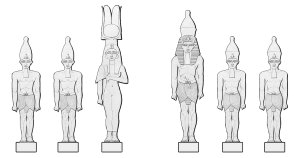Methods
- Map/GIS
- Virtual Reality
Research Field
- Egyptology
Memphis was one of the most illustrious and cosmopolitan metropolises of the ancient world. Strategically located at the vertex of the Nile delta, it was the Old Kingdom capital of Egypt. Its lifespan ranged from the beginning of the 3rd millennium BC to the 5th century AD, making it one of the most long-lived cities of the world. Despite what one might expect, Memphis has almost completely disappeared, leaving the impressive pyramid complexes as the only evidence of its past existence.
Most of the information we know about its topography comes from ancient sources that described Memphis both intentionally and accidentally. These sources include classical historians – such as Herodotus, Thucydides, Diodorus and Strabo to name a few – who provided detailed accounts about the topography of the city during the Late Period and the Graeco-Roman Egypt. Among the Egyptian sources, the Memphite Theology is a particularly intriguing religious text because it describes places that so far were considered related to the mythological Egyptian imaginary but that, ultimately, may reflect real places of Memphis. Collating spatial information coming from textual sources and comparing it with the morphology of the actual site, a consistent cityscape image resurfaces. Lake Acherusia, the Abaton of Osiris, the fortress of the White Wall and the temple of Ptah “South of His Wall” may eventually find their places in a predictive map.

We created a virtual reality (VR) application that helps us visualize the Memphite landscape and conduct embodied explorations. We built our application using the popular “Unity” game engine and deployed it on the low cost “Oculus Go” portable VR display system. In the future we plan to make our VR application available to other researchers as well as the general public.
Participants
- Nevio Danelon
- David J. Zielinski

